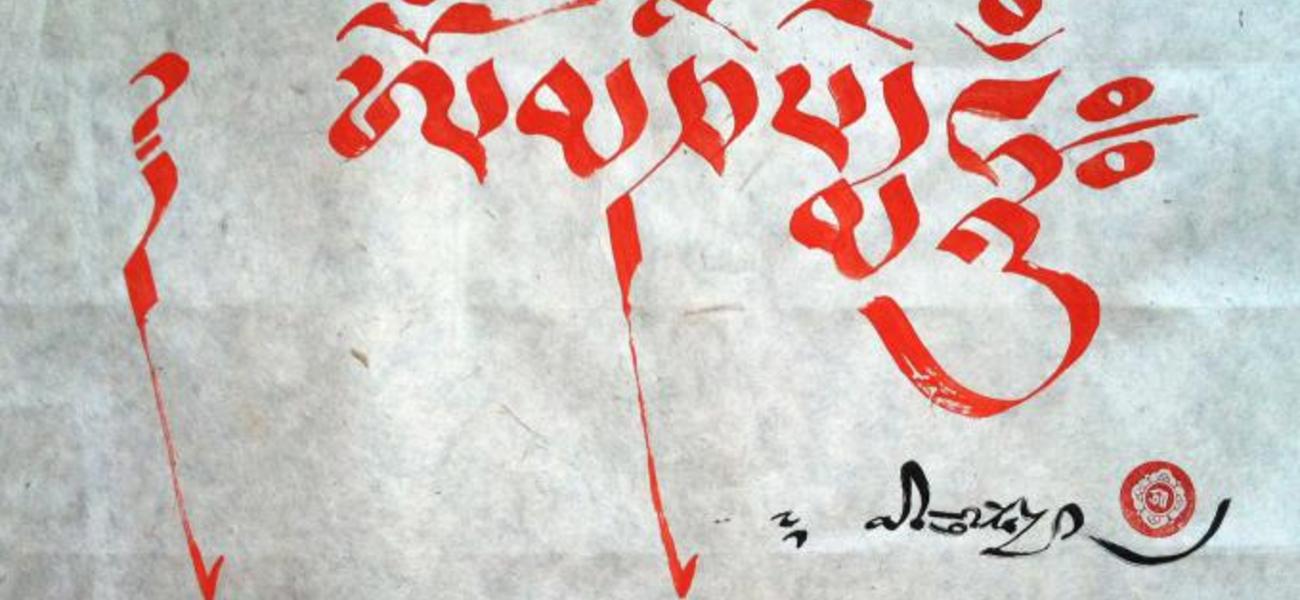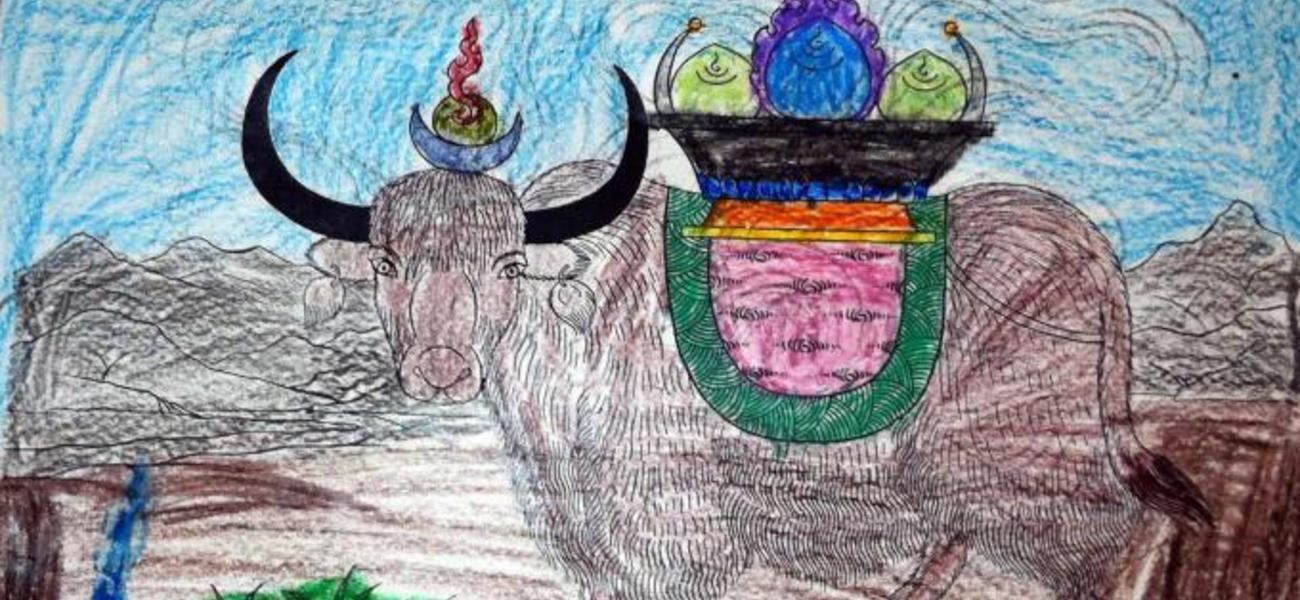For fifteen hundred years the Tibetan plateau has been home to a unique calligraphic culture, due both to a large population of monks who were expected to copy sacred texts and to technological development slowed by decades of geographic and political isolation. That’s why, as we become a part of a networked, plugged-in world—and as we spend more and more hours in front of computer screens—Trace Foundation was so excited to see a full and lively house for an event we held celebrating the heritage and techniques of this unique traditional art. We were particularly pleased to see so many parents bring their children to deepen understanding of their heritage.
On Saturday, September 29, 2012, Mipham Namgyal Rinpoche, a highly regarded artist, designer, calligrapher, and tulku (a reincarnated Tibetan lama) traveled to us from the Wamlung Dongak Chökorling Monastery in Kyegudo, Qinghai, to give a lecture and demonstration on his art form. Even before guests arrived, the Library came to life as he unrolled his work and as we hung up the work of special guests calligrapher Phuntsok Dhumkhang and library director Pema Bhum.
In his talk, Rinpoche described types of Tibetan calligraphy, particularly Ü-chen, or writing "with a head," a script traditionally used for religious and sacred texts; and "Ü-me," or writing "without a head," which was primarily used in secular contexts. Pointing to scrolls overhead, Rinpoche described how history has shaped the art form and how the lettering Tibetans know today came into existence in the seventh century.
Calligraphy is a notoriously difficult and demanding art form, Rinpoche explained; while a painter may take four years to master the trade, a Tibetan calligrapher needs at least six. Mistakes in calligraphy demand the artist start over from scratch, and each character is layered with meaning. Rinpoche laughed as he explained that he could often spot a skilled calligrapher by the way he or she crafts drüm alone—a character containing seven elements (see the image slideshow for artwork of this character).
Buddhist master Ju Mipham suggested calligraphers think of the script proportions as a human body—complete with head (not too big), legs (not too long), a belly (not too thick), and eyes. Letters should be like neighbors, Mipham said, not stacked tightly on top of one another, but spaced out to give each ample room to breathe.
After the talk, we invited the audience to participate in a silent auction and calligraphy sale, with proceeds going to the artists and to supporting the Foundation’s work. Rinpoche, Bhum, and Dhumkhang set up at tables where they took calligraphy requests for everything from the classic Six-Syllable Mantra (Om mani padme hum) to proverbs, names, and words closer to visitors’ hearts—some penned with markers, some with brilliant red paint, but all striking and beautiful.
Select artwork is still available for purchase. Please e-mail us at events@trace.org for more information or to request personalized calligraphy by Pema Bhum or Phuntsok Dhumkhang. Over the coming week, we will continue to exhibit the artwork in our Library, which is open and free to the public on Thursdays, Fridays, and Saturdays and by appointment on Tuesdays and Wednesdays. Copies of the book The World Encyclopedia of Calligraphy, with contributions on Tibetan by Pema Bhum, are available for purchase.







